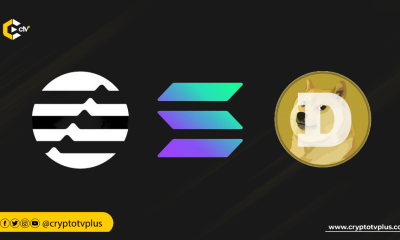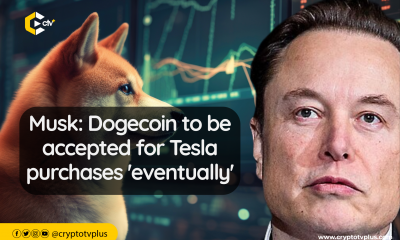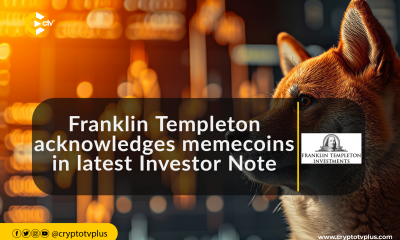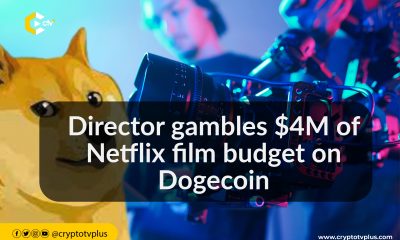Education
All you need to know about DRC-20

Blockchain technology has been a game-changer across several industries, particularly finance and healthcare.Its decentralized nature offers increased security and transparency, presenting a fascinating challenge to conventional systems.
Among blockchain’s many developments is the use of cryptocurrency, which provides a new way of tokenizing assets.
These tokens can then be offered as products to valuable utilities, such as payment services, within various ecosystems. Though Bitcoin broke ground in terms of digital currency worldwide adoption, Ethereum made a name for itself by becoming another significant player that established the ERC-20 standard. It allowed developers to create fungible assets on Ethereum’s infrastructure easily.
This move helped maintain compatibility across participating wallets, exchanges, and other platforms. Building on these achievements is BRC-20, designed specifically for those working within Bitcoin’s ecosystem(s). Additionally, more progress is being made through projects such as Dogecoin Blockchain, incorporating previous successes and introducing DRC-20.
With DRC-20, developers and users have a standardized protocol for creating fungible assets within Dogecoin’s ecosystem. This development attests to the adaptability and continuous evolution of blockchain technology to meet emerging needs across industries.
In this article, we will look into what DRC-20 is, how to mint, the difference between Doginals and regular NFTs as well as the challenges. Let’s delve in.
What is DRC-20?
The dogecoin Blockchain now has a framework for creating fungible tokens thanks to the development of the DRC-20 standard. It represents a big leap forward in innovation for the doge community.
Since its launch on May 9th, the DRC-20 has been developed similarly to BRC-20 and enables the inscription of digital artifacts onto each of the smallest indivisible units of DOGE, commonly called elons.
What sets this standard apart is that it offers a way to store arbitrary content within these native digital artifacts, eliminating the need for separate tokenization or sidechain deployment.
Thanks to this unique feature, both fungible and non-fungible tokens can be created and exchanged with greater ease than ever before.
The recent surge of $DOGE has caused quite a stir among investors, with its daily transaction volume reaching an all-time high of 719,000, surpassing Bitcoin’s record of 566,000 daily transactions. This unexpected development has created a lot of buzz in the market.
How to mint DRC-20 Tokens
To mint Doginals, you can use the Dpal wallet or use the token-minting service on DRC-20.org, These simple steps will guide you through the process of minting Doginals on Dpal.
On Dpal
1. Set up a compatible wallet
To create a ÐPAL wallet, visit the official website and click “Install Chrome extension”. Then, click “Add to Chrome” and “Add Extension”. After that, click “Create New Wallet” and choose a password. Record your backup mnemonic by clicking “Click and Show” and enter your mnemonic to confirm it. If correct, you’ll receive a message confirming your wallet setup.
2. Mint tokens
First and foremost, you’ll need some $DOGE in your DPAL Wallet – even a small amount goes far, as transaction fees are incredibly affordable. Purchase from any exchange, and you’ll be all set.
To access the wallet settings, click on the wallet icon located in the top right corner. From the drop-down menu, choose “Ordinals” and then select “Mint Ordinals” (Experimental). In the text box labeled “Inscribe Inscriptions,” enter your desired inscriptions for the DRC-20 tokens. A list of inscriptions can be found in this article. After inputting the inscriptions, click on the “Inscribe” button. Your wallet is now connected and ready to use.
On DRC-20-20 Service
- Go-to DRC-20.org
- Select a Token
Select a token you wish to mint, and input the quantity for minting to determine the required DOGE amount.Enter Amount of Tokens to Mint
Type in the total supply of tokens you wish to mint, and move to the next step.
3. Enter Recipient Address
The recipient address is where you want to send your newly-minted tokens.
- Confirm & send DOGE
Ensure you correctly enter all the necessary and correct details and send the doge token.
Difference between regular NFTs and Doginals
Even though Doginals are digital assets created on blockchains, similar to NFTs, there are some key differences that distinguish them:
- Doginals are linked to the Dogecoin network. Conversely, NFTs can be generated on multiple blockchains like Ethereum and BNB Chain.
- Doginals store all their data on-chain, while NFTs frequently link to files not hosted on the blockchain.
- Doginals, unlike NFTs that are usually created using smart contracts on blockchains, are directly inscribed onto each Shibe and subsequently incorporated into blocks on the Dogecoin network.
- Doginals adhere to the Dogecoin-specific DRC20 standard, while NFTs typically follow other standards like ERC-721 (Ethereum) or BEP-721 (BNB Chain).
Top 3 DRC-20 tokens
Despite being a new standard, there are several assets on the network already. Here are some of the top DRC-20 tokens.
- $Fiwb: It currently has 20,114 holders with a total of 1 billion in supply.
- $dogi: Currently has 1,150 holders with a total supply of 21 million.
- $Pepe: Currently has 4,176 holders with a full supply of 21 million.
Challenges — the indexing problem and community critics
There is a challenge in indexing assets created using the protocol. However, according to Doge Labs, they are the first subscription service capable of indexing DRC-20 tokens, enabling traders to utilize unique fungible tokens throughout their network.
While many in the Dogecoin community are excited about the rise of DRC-20 tokens, there are dissenting voices warning about their potential drawbacks. Critics within the community express concerns about the negative impact the tokens could have on the network, and worry that these developments are not aligned with Dogecoin’s original vision. As a result, some community members are expressing their dissatisfaction and urging a refocusing of efforts on the currency’s intended purpose. Clearly, ongoing discussions are necessary to ensure that token deployments align with Dogecoin’s broader vision and values.
Final note
Just as BRC-20 generated a significant buzz in the Bitcoin community, the DRC-20 standard is driving network growth within the Dogecoin community. This newly developed standard has propelled the transaction count on the network to surpass that of BTC, demonstrating its rapidly growing adoption. Recently released and complemented by low transaction fees, the widespread adoption of this standard has an unpredictable future. However, one thing remains certain: innovation never rests in the fast-paced crypto industry.
Read Also: How AI & Blockchain are Changing the World: benefits & risks

























1 Comment